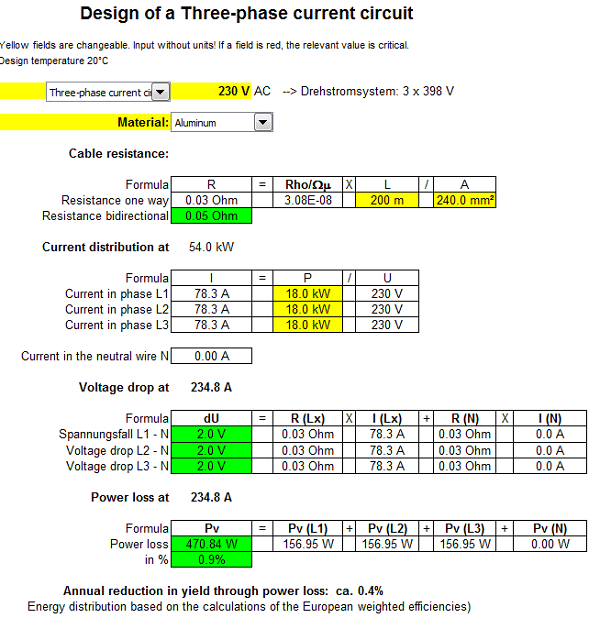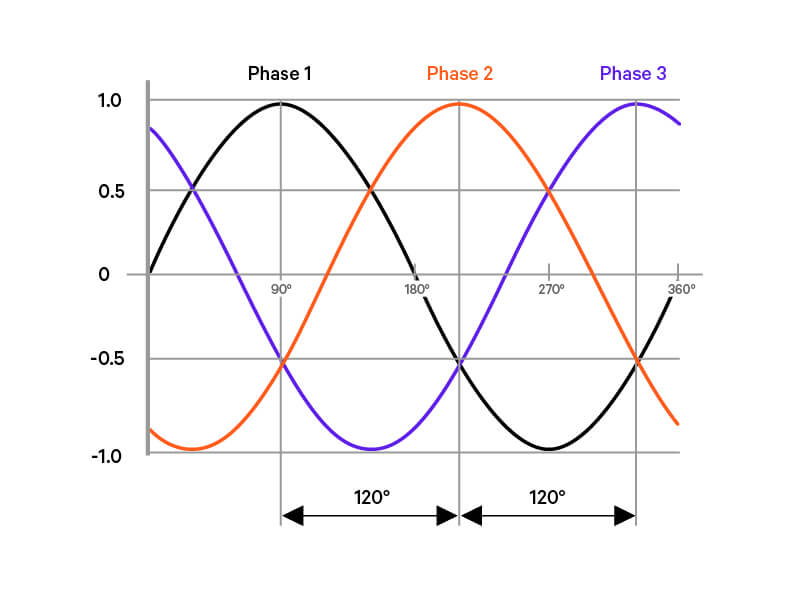Glory Tips About Is 3 Phase Current Per Or Total

Understanding 3-Phase Current
1. Delving into the Heart of 3-Phase Power
So, you're wrestling with the question of whether 3-phase current is measured per phase or as a total value? It's a common point of confusion, and honestly, it's easy to get mixed up. Think of it like this: imagine you're making a cake (because who doesn't love cake?). You need flour, sugar, and eggs. 3-phase power is similar, but instead of ingredients, you have three separate phases, each carrying its own current.
Essentially, when we talk about 3-phase current, it can refer to a couple of different things depending on the context. We can be referring to the current flowing through a single phase (per-phase current) or the total current drawn by the entire 3-phase system. That's where the potential for confusion lies. The key is understanding which value is being discussed in a particular situation.
The per-phase current is simply the amount of current flowing through one of the three phases. This is often what engineers use for calculations related to individual components or when balancing the load across the phases. Its essential for designing circuits and ensuring everything operates within its safe limits. Kind of like making sure you don't overload your stand mixer when adding all the ingredients at once!
On the other hand, the total current is a more complex idea. It isnt simply the sum of the three phase currents because of the phase differences between them (they are 120 degrees out of phase). Instead, it's often represented by the line current, which is the current flowing through the lines connecting the power source to the load. This total is crucial for things like sizing transformers or conductors, which need to handle the combined demand of all three phases. We'll explore line current more in a bit.
2. The Line Current Connection
Let's zoom in on line current. This is the current that actually flows through the wires connecting your power source (like the grid) to your equipment (like a massive industrial motor). The line current isn't just a simple sum of the individual phase currents because these currents are out of sync. Remember that 120-degree phase difference? This means they don't peak at the same time, and they partially cancel each other out. Its a bit like three people pushing a merry-go-round; each contributes, but the overall motion is smooth and consistent, not jerky.
The actual calculation for the line current depends on whether the 3-phase system is wired in a "delta" configuration or a "wye" (sometimes called "star") configuration. In a wye connection, the line current is equal to the phase current. But in a delta connection, the line current is 3 (approximately 1.732) times the phase current. Those connections are different on how the loads are connected and what that relationship between line and phase currents are.
Why does this matter? Well, understanding the line current is critical for selecting the right gauge of wire for your electrical installation. You need to ensure that the wires can handle the total current demand without overheating and causing a fire hazard. In other words, it's not just about knowing how much each phase is drawing but knowing how much your wires are actually carrying. It's like knowing how much weight your car's tires can handle before you load it up for a cross-country trip.
Consider an example: Imagine a 3-phase motor connected in a delta configuration. If each phase is drawing 10 amps, the line current isn't 30 amps. Instead, it's approximately 17.32 amps (10 amps 3). Neglecting this difference could lead to undersized wiring and some serious electrical problems. Make sure to double check connection before working on anything.
3. Power and Current: The Dynamic Duo
Now, let's talk about power. How does this whole per-phase versus total current thing relate to the power being delivered? Well, the total power in a balanced 3-phase system is not simply three times the power in one phase. The power calculation takes into account the line voltage, line current, and a power factor, represented by the formula: P = 3 VL IL PF, where VL is the line voltage, IL is the line current, and PF is the power factor.
Notice that the formula uses the line voltage and line current. This is because we are interested in the total power being delivered to the load. However, the power factor (PF) is crucial here. It represents the efficiency of the electrical system. An ideal power factor is 1, which means all the current is being used to do useful work. In reality, the power factor is often less than 1 due to inductive loads like motors and transformers.
Let's go back to our cake analogy. The power is the total deliciousness of the cake. The ingredients (flour, sugar, eggs) are the individual phases, but the way they interact (power factor) affects how tasty the final cake is. A perfect power factor is like having perfectly balanced ingredients, resulting in a delectable masterpiece.
Understanding this interplay between voltage, current, and power factor is key to ensuring that your 3-phase system operates efficiently and safely. Without it, you're just guessing, and electrical systems don't respond well to guesswork! Also remember that without this correct configuration, you run a risk of damaging any equipment running from this electrical grid.
4. Why This Matters
So, why is understanding all of this important in the real world? Well, think about designing an electrical system for a large manufacturing plant. You need to determine the size of the generators, transformers, and wiring based on the expected load. If you incorrectly calculate the current requirements (either per-phase or total), you could end up with an undersized system that can't handle the demand, or an oversized system that's wasting money.
Moreover, understanding these concepts is critical for troubleshooting electrical problems. Let's say a motor is overheating. Is it because one of the phases is drawing too much current? Is there an imbalance in the load? Or is the power factor low, causing excessive current draw? These are all questions that require a solid understanding of 3-phase current and power.
Consider the scenario of balancing a 3-phase load. Ideally, you want each phase to carry an equal amount of current. This minimizes neutral current (in wye systems) and reduces the risk of overloading any one phase. In practice, achieving perfect balance is often impossible, but striving for it improves efficiency and extends the life of electrical equipment.
In short, mastering the concepts of per-phase and total current in 3-phase systems is essential for anyone working with electrical power. It's not just theoretical knowledge; it's practical knowledge that directly impacts the safety, efficiency, and reliability of electrical systems.
5. Common Pitfalls and How to Avoid Them
One of the most common mistakes is assuming that the total current is simply the sum of the individual phase currents. As we've discussed, this is incorrect due to the phase differences. Another common error is neglecting the power factor. A low power factor can significantly increase the current draw, leading to overloaded circuits and wasted energy. Ignoring this can be quite a shock to both your electrical system and your utility bill.
Another potential pitfall is failing to consider the wiring configuration (delta or wye) when calculating the line current. Using the wrong formula can lead to significant errors in your calculations. Make sure to double-check whether your system is delta or wye and use the appropriate equation. Getting this detail right can save you a whole lot of headaches down the line.
Also, remember to always measure currents under normal operating conditions. Transient loads (brief spikes in current demand) can distort your readings and lead to inaccurate calculations. It's best to take measurements over a period of time to get a more accurate representation of the actual current draw.
Finally, never underestimate the importance of safety. Always disconnect power before working on electrical equipment, and use appropriate personal protective equipment (PPE) like gloves and eye protection. Electrical work can be dangerous, and it's not worth risking your life to save a few minutes.

Frequently Asked Questions
6. Q
A: Phase current is the current flowing through each individual phase winding, while line current is the current flowing through the conductors connecting the source to the load. The relationship between them depends on the wiring configuration (delta or wye).
7. Q
A: The total power (P) is calculated as P = 3 VL IL * PF, where VL is the line voltage, IL is the line current, and PF is the power factor.
8. Q
A: Balancing the load minimizes neutral current (in wye systems), reduces the risk of overloading any one phase, improves efficiency, and extends the life of electrical equipment.
9. Q
A: A low power factor increases the current draw, which can lead to overloaded circuits, wasted energy, and increased utility bills. Power factor correction techniques are often used to improve the power factor.

3 Phase Power Calculation

2Phase Vs 3Phase Punchlist Zero

How To Calculate 3 Phase Panel Load Wiring Diagram
